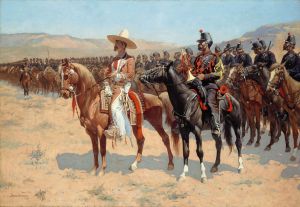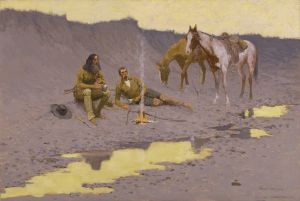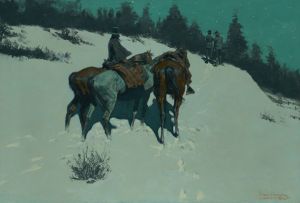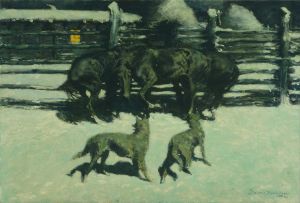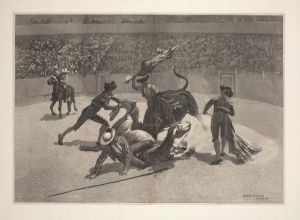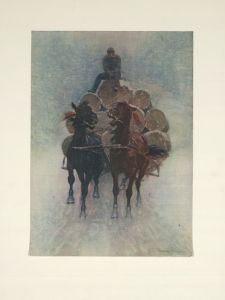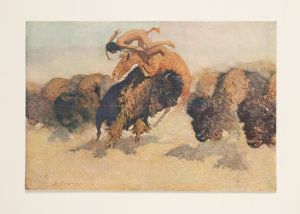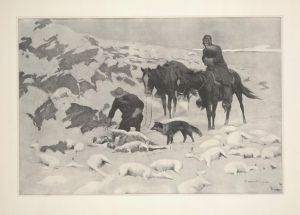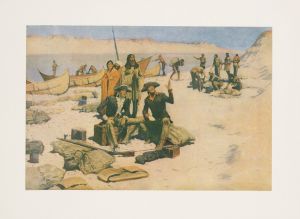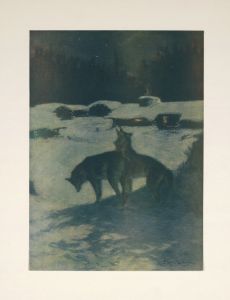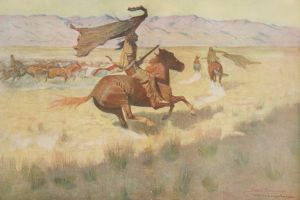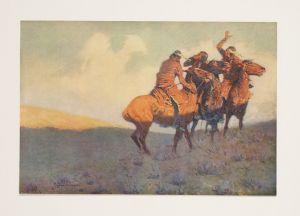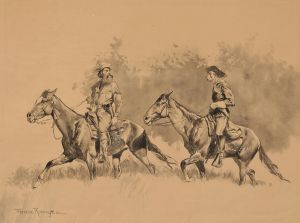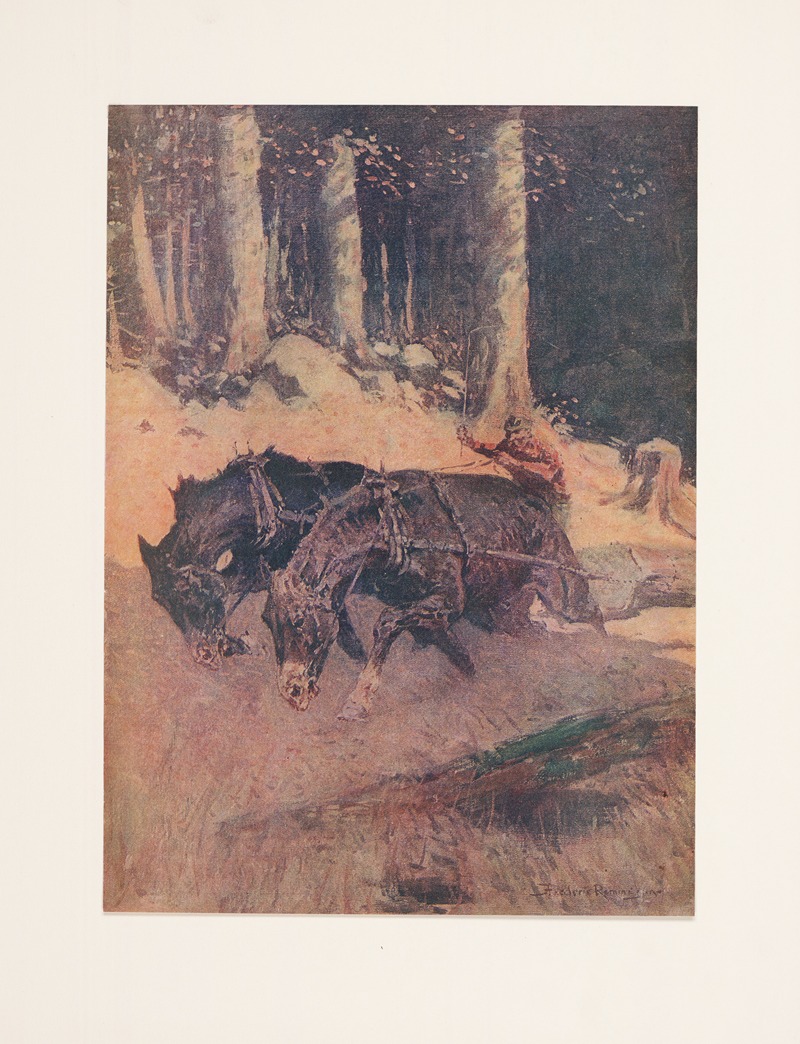
Snaking logs to the skidway
A hand-painted replica of Frederic Remington’s masterpiece Snaking logs to the skidway, meticulously crafted by professional artists to capture the true essence of the original. Each piece is created with museum-quality canvas and rare mineral pigments, carefully painted by experienced artists with delicate brushstrokes and rich, layered colors to perfectly recreate the texture of the original artwork. Unlike machine-printed reproductions, this hand-painted version brings the painting to life, infused with the artist’s emotions and skill in every stroke. Whether for personal collection or home decoration, it instantly elevates the artistic atmosphere of any space.
"Snaking Logs to the Skidway" is a painting by the renowned American artist Frederic Remington, who is best known for his depictions of the American West. Remington's work primarily focused on the late 19th-century Western United States, capturing the essence of frontier life, including cowboys, Native Americans, and the U.S. Cavalry. His art is characterized by its attention to detail, dynamic compositions, and a deep understanding of the subjects he portrayed.
Frederic Remington was born on October 4, 1861, in Canton, New York. He developed an early interest in art and attended the Yale School of Art, although he did not complete his studies there. Instead, he ventured westward, where he found inspiration in the landscapes and people he encountered. Remington's experiences in the West greatly influenced his artistic style and subject matter, leading him to become one of the most prominent artists of his time.
"Snaking Logs to the Skidway" is one of Remington's lesser-known works, but it still reflects his keen eye for detail and his ability to capture the ruggedness of frontier life. The painting depicts a scene of loggers working in a forested area, using horses to drag logs to a skidway—a platform or track used to transport logs to a river or sawmill. This subject matter highlights a different aspect of the American frontier, focusing on the logging industry, which was a significant part of the economy during Remington's era.
The composition of "Snaking Logs to the Skidway" showcases Remington's skill in portraying movement and action. The horses are depicted in mid-stride, muscles taut as they pull the heavy logs across the uneven terrain. The loggers are shown in various poses, emphasizing the physical labor and teamwork required in such an endeavor. Remington's use of color and light adds depth to the scene, capturing the natural beauty of the forested environment while also conveying the harsh conditions faced by those who worked there.
Remington's ability to convey the spirit of the American frontier extended beyond his paintings. He was also a prolific illustrator and writer, contributing to magazines such as Harper's Weekly and Collier's. His illustrations often accompanied stories about the West, further cementing his reputation as an authority on the subject. Through his art and writing, Remington played a significant role in shaping the popular image of the American West, both in his time and for future generations.
While "Snaking Logs to the Skidway" may not be as widely recognized as some of Remington's other works, such as "The Broncho Buster" or "The Stampede," it remains an important piece within his oeuvre. It provides insight into the diversity of frontier life and the various industries that contributed to the expansion and development of the United States during the late 19th and early 20th centuries.
Frederic Remington's legacy as an artist is enduring, and his works continue to be celebrated for their historical significance and artistic merit. "Snaking Logs to the Skidway" is a testament to his ability to capture the essence of a bygone era, preserving the stories and experiences of those who lived and worked on the American frontier.





